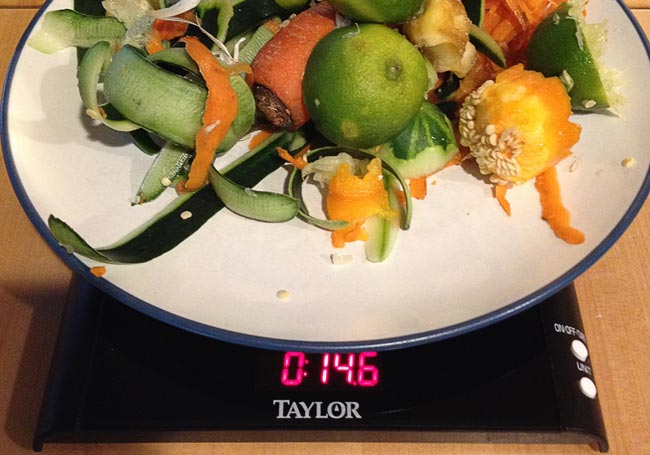Getting started: gather information and set goals

If your business has decided to reduce its food waste – congratulations! The good news is that there are a lot of resources available to help with this goal. Start by identifying how much and what kind of food your business wastes. You can perform your own audit (see sidebar for helpful resources), ask your waste hauler if they provide the service, or hire a waste assessment professional. We suggest assigning enthusiastic staff to help with this project and serve as advocates to keep the whole team on task.
Conduct a site assessment
Review all policies, processes, and employee actions that are related to the collection and disposal of waste. This is best accompanied by a physical walk-through and conversations with personnel at varying levels of authority – talking to front-line employees as well as managers may give a more realistic and complete picture of day-to-day operations.
Resources
There are many food waste resources for businesses. Here are a few:
Identify the baseline and set target goals
Baseline information is necessary to know the amount and type of food your business typically wastes, allowing your business to track future efforts and measure improvement. Choose the period of time that you want to track. One year’s worth of data will allow you to analyze trends and seasonal fluctuations, but shorter periods of time can also be helpful. Start by asking your hauling company for a record of your recycling, garbage, and composting tonnage collected over the last year.
Calculate your recycling and composting rates
Divide your total monthly recycling quantity by the quantity of your overall total monthly waste (including recycling, composting and garbage). Divide your total monthly composting quantity by the quantity of your overall waste to get your composting rate.

Once you have established how much your company diverts to recycling and composting, set goals for improvement for one month, six months, one year or more. Revisit these goals regularly to maintain accountability and adjust accordingly.
Conduct a waste assessment
A waste assessment, or a waste characterization study, categorizes and measures the waste generated by your business on a typical day. This will allow you to identify opportunities to improve efficiency and reduce waste
Categorize waste types
You can choose your own categories or use a pre-developed list, such as the U.S. EPA Waste Reduction Model (WARM) external link . WARM divides waste into 54 different material types. One of the benefits of using WARM is the corresponding tool for calculating your greenhouse gas (GHG) emissions based on your waste (both a Web-based calculator and a Microsoft Excel spreadsheet are available).
Get in there!
After picking a representative day for your business, it’s time to sort your waste: pick some dedicated team members, lay out tarps, and start sorting. Track the following:
- Types of waste: Using WARM, your own categories, or another classification system, sort waste by type. Make sure to sort food waste by types of food – such as produce, meat, or dairy.
- Quantify of each type: After sorting, weigh and record quantities for each category.
- Where generated: If you have different sectors of your business generating waste for different purposes (i.e. kitchen waste versus plate waste in a restaurant), track the point at which food is wasted.
- Why wasted: Record the reason for waste – whether spoiled, trimmed, wasted by customers, or other reasons.
Use a log, such as this one (external PDF offered by the EPA, to record standardized observations.
Now you are ready to manage food waste through prevention and reduction, rescue (donation) or recycling.


 Translate
Translate
